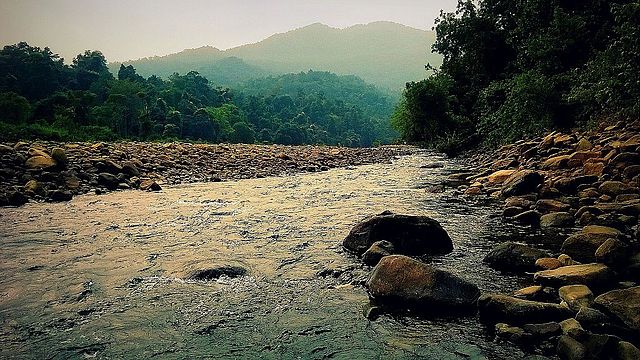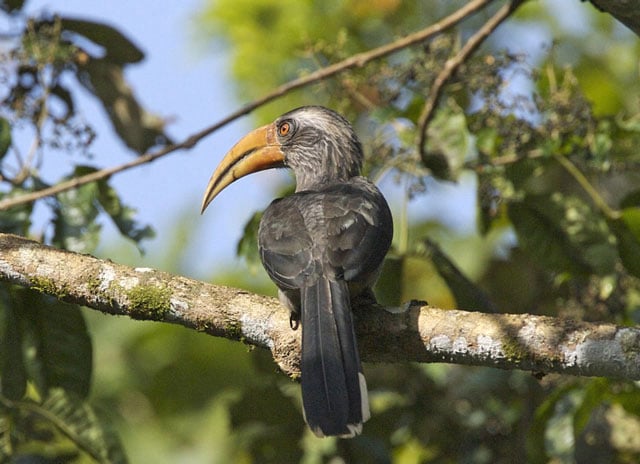“Adorned by red silk trees and sparkling waterfalls; the best is when the Mynah calls”
Similipal National Park derives its name from the red silk trees which seem to adorn this forested land lying in the Mayurbhanj district of Orissa. The scenic beauty of the landscape is further enhanced by the charming waterfalls like Joranda and Barehipani. It was originally set us a private hunting ground for the royal family of Mayurbhanj, but later it acquired the status of a Tiger Reserve under Project Tiger. It was also included in the list of Mayurbhanj Elephant Reserve which includes two other parks as well. Spread across a huge area of 2750 sq km and lying at an elevation of 553 m above sea level, the park boasts of its tiger and elephant population. A great variety of avifauna also visits the Similipal National Park.

Climatic Conditions
The Similipal National Park witnesses a hot summer season with temperature reaching upto 40˚C, while the winter season is pleasant with temperatures not falling below 14˚C. The rainfall in this area may range from moderate to heavy.
Best Time to Visit
The forest is open for tourists during the months of November to mid-June.
Wildlife & Vegetation
A total of 42 mammalian species, 230 avian species and 30 reptilian species form the resident population of Similipal.
1. Animals

The Similipal National Park is home to an amazing variety of 99 royal Bengal Tigers and as many as 432 elephants! Apart from these you can find Sambars, spotted deer, leopard, langur, sloth bear, mongoose, flying squirrel, Malabar giant squirrel, four-horned antelope and many more roaming around in the woods.
• Reptiles

Vine snake, cat snake, python, turtles and the mugger crocodile include the reptilian species that can be found in the park in good numbers.
• Birds

Approximately 230 species of birds have been discovered in this area including the hill mynah, peafowl, red jungle fowl, alexandrine parakeet, grey hornbill, Indian trogon and many others! The similipal national park is thus known as bird lovers’ paradise!
• Vegetation
Similipal National Park is a thickly forested area with meandering rivers, beautiful meadows and sparkling waterfalls that add to the picturesque beauty of the land. The forested area ranges from dry deciduous to moist green forests surrounded by the mighty peaks of Kiriburu, Meghasani and many others. Tall sal trees, champak flowers with their sweet aroma and the huge variety of orchids seem to hold on to the land with edaphic variations. Sun rays seem to shine through the midst of these tall dense trees creating the tyndall effect. The landscape with all of its features is simply enchanting.
Distance from Nearby and Major Cities
Baripada lying at the junction of NH 5 and NH 6 is the district headquarters of Mayurbhanj. The park lies close to Bhubaneshwar and Kolkata. There are three entry points: Balasor, Pithabhat and Jashipur.
• Baripada: 45.1 km
• Balasore: 69 km from Similipal and 60 km from Baripada
• Pithabhat: 22 km from Baripada
• Jashipur: 94 km from Baripada
• Bhubaneshwar: 170 km
• Kolkata: 228 km
• Lucknow: 786 km
• Delhi: 1192 km
• Mumbai: 1432 km
How to Reach
• By Air: Nearest airports include Bhubaneshwar at a distance of 270 km and Kolkata at 240 km
• By Rail: Nearest railway station is Balasore lying at a distance of 60 km
• By Road: Baripada lying at the junction of NH 5 and NH 6 is the district headquarters of Mayurbhanj. There are three main entry points: Balasore, Jashipur and Pitabhat. These are well connected by regular buses, taxi and jeep services. The tourist vehicles are allowed to enter from Kaliani and Pitabhat gates respectively. The vehicles coming in from Jashipur are allowed to enter during morning hours only.
Local Attractions
While this land of magical woods is enough to satiate your need for a thrilling yet beautiful experience, there is much more you wouldn’t want to miss out!
• Khiching is where you can find beautiful stone crafts! This place is also famous for the shrine of Kichakeswari. It is situated at a distance of 55 km from Jashipur and 150 km from Baripada.
• A yet another place adorned with beautiful waterfalls is the land of Deokund situated 65 km from Baripada.
Accommodation
Accommodation at two tourist cottages is made available near the national park. These resorts are situated at a distance of 25 km from Jashipur. The tariff here ranges from Rs. 400 to Rs. 1000.
For reservations at Jamauni, please contact Deputy Director, Similipal Tiger Reserve, Baripada (06792-259126).
Private hotels are also available at Baripada and Jashipur.
The Orissa tourism unit also offers accommodation at Baripada and Pitabhat. Pre-reservation is required.
Other Useful Information
• Similipal remains open from 1st November to 15th June only.
• Entry permits can be obtained form Range Officer, Pitabhat check gate or the assistant conservator.
• Entry fee/person/day is as follows:
Rs. 40 (for Indians)
Rs. 1000 (for foreign nationals)
Rs. 10 (students)
Rs. 30 (for those conducting research) (Indians)
Rs. 450 (for those conducting research) (Foreign nationals)
• Entry fee/person/day for a group of 10 or more people is as follows:
Rs. 30 (for Indians)
Rs. 200 (for foreign nationals)
• Entry is free for children below 3 years and differently abled persons.
Additional Fees:
• Fee for trekking/nature trail (per head/day)
Rs. 20 (for Indians)
Rs. 100 (for foreign nationals)
• Still camera, amateur photographer:
Rs. 20 (for Indians) per camera for first three days and Rs. 10 is charged thereafter
Rs. 100 (for foreign nationals) per camera for first three days and Rs. 40 is charged thereafter

